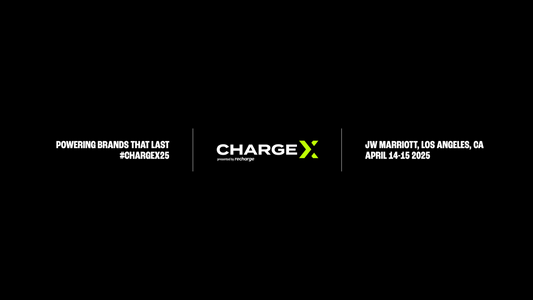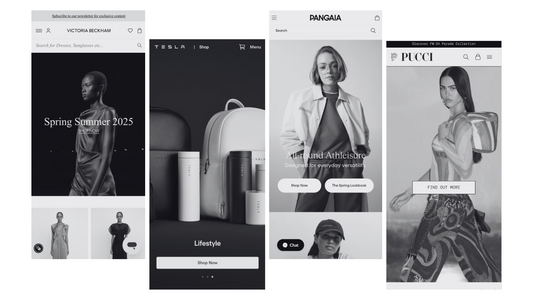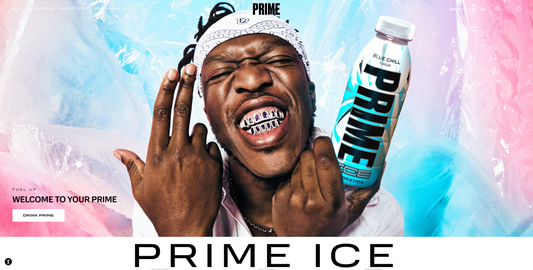How do I optimize my conversion rate on Shopify?
In general, there are two paths that lead towards increasing revenue for your online store. The first route involves focusing on generating more traffic for your store. The second pathway places extra emphasis on improving your website so that you can get more sales from the visitors landing on your website. The second pathway is the basis of conversion rate optimization (CRO).
Your conversion rate is the percentage of visitors who come to your website and then proceed to carry out pre-specified actions. This can include signing up for newsletters, booking appointments, and buying products among other pre-determined actions.
CRO is simply the method of employing different tactics to improve a website with the end goal of increasing the conversion rate. Read on to learn all you need to know about the basics of applying conversion rate optimization to your ecommerce website.
The Building Blocks Of Your Conversion Rate Optimization Strategy
Three basic steps are essential for developing an effective conversion rate optimization strategy. These are:
- Data collection
- Identifying problems and forming hypotheses
- Enacting changes and measuring results
Let’s go through each of these steps, in turn, to fully understand what’s needed to complete them.
Data Collection
The first step involves collecting data to identify your website’s current performance. Only when you know where you can you effectively strategize areas for improvement. It goes without saying that your ecommerce store needs to be set up with Google Analytics as a minimum standard. It’s free to use and provides key information on key metrics such as your website traffic.
From this data, you can calculate your current conversion rate by comparing the level of traffic to your data on specific actions such as completing checkout. Once a base-level of conversion is established, it can move onto a process of setting specific CRO goals that you’ll work towards.
It is also good practice to gather qualitative data from your customers. This helps you to find out why they are or are not behaving in a certain way. You can collect this type of information from customer surveys and interviews. It’s important to craft questions that provide insights both into the factors behind customer behavior and what might change this. Check out a few general examples below:
- What made you want to buy X product/ service?
- How much would you be willing to spend on this product/ service?
- What other companies who provide X product/ service have you visited?
- What did you like/ dislike about their website and products/ services?
- How could we make X product/ service a more attractive purchase for you?
- What have you liked and disliked about your experience on our website?
Identify Problems And Form Hypotheses
The second step for optimizing your web conversion rate is based on analyzing what you’re doing right and what you’re doing wrong. Google Analytics can shed light on this by providing useful quantitative data. For instance, you can see which products and pages perform the best in terms of conversions. Similarly, if abandoned shopping carts are a particularly salient problem for you, then you can evaluate data on this too.
The qualitative data will also provide useful information regarding areas that could use improvement. Customers are often more willing to air out bad experiences and such feedback can be particularly useful when it comes to identifying aspects that need to be addressed.
Taken together, qualitative and quantitative data will present a good overall picture of your website’s performance. This can be used to form hypotheses about the weak spots or blind spots and how they can be improved. This places you in a good position to introduce site changes and test how they affect your conversion rates.
Enact Changes And Measure Results
When the website conversion analysis is complete and you developed your hypotheses, you can enact changes to your website. However, it is crucial that you also assess the effect of these changes on your conversion rates. This can be done by carrying out A/B tests.
To conduct an A/B test, you need to make a change to one of your webpages but also keep a copy of its original form live. These are your A and B pages. You then send similar samples of visitors to both pages over a set period. At the end of the testing period, you can check which page has a higher conversion rate. From there, you can institute the winner as the permanent page on your site. Do this for all the important pages on your website, altering any aspect that your data has suggested may be a problem.
To help you conduct A/B testing, there are a number of online tools available. These include AB Tasty, Unbounce, VWO, Leanplum, and Optimizely. Each offers different features and price structures, so it’s important to research them and establish which best fits your needs.
Bear in mind that you need sufficient traffic to your site to generate statistically significant results for effective A/B testing. To ascertain whether or not you get enough visitors to form sufficiently large samples, you can use this convenient calculator. If you are not currently attracting enough visitors, then you will need to focus on generating more traffic first.
Optimize Your Conversion Rates
Once you collect data, identify problems, form hypotheses, and make amendments, you’re well on your way towards improving your website’s conversion rate optimization.
But don’t stop there. Consistently analyze the data and continually make improvements. Assess the progress every step of the way. Was your hypothesis right? What can you learn from initial tests that can help you construct future tests? What do the results suggest you should test next?
By continuing to gather data, asking the right questions, and implementing data-driven tests, you will be in a prime position to maximize your website’s conversion optimization.
Claim your free conversion rate audit here.





